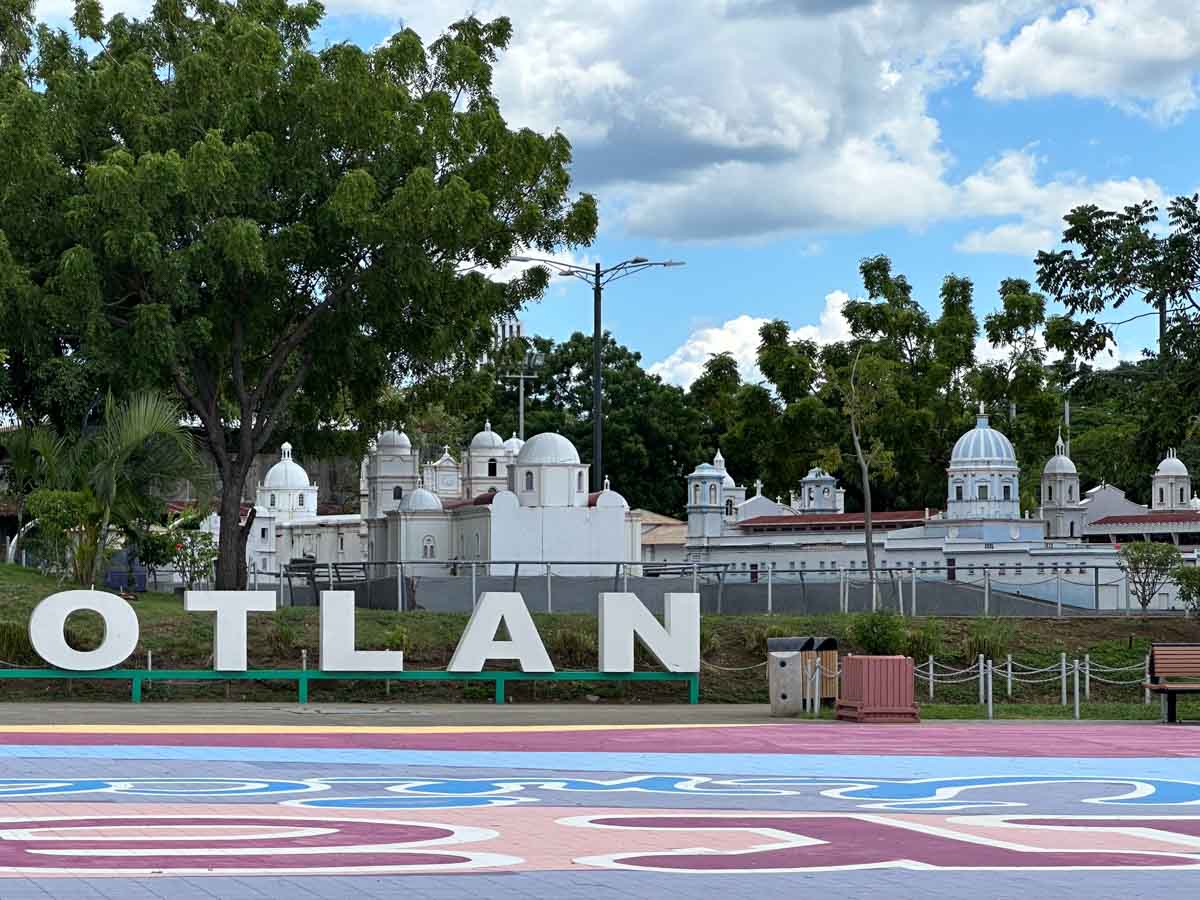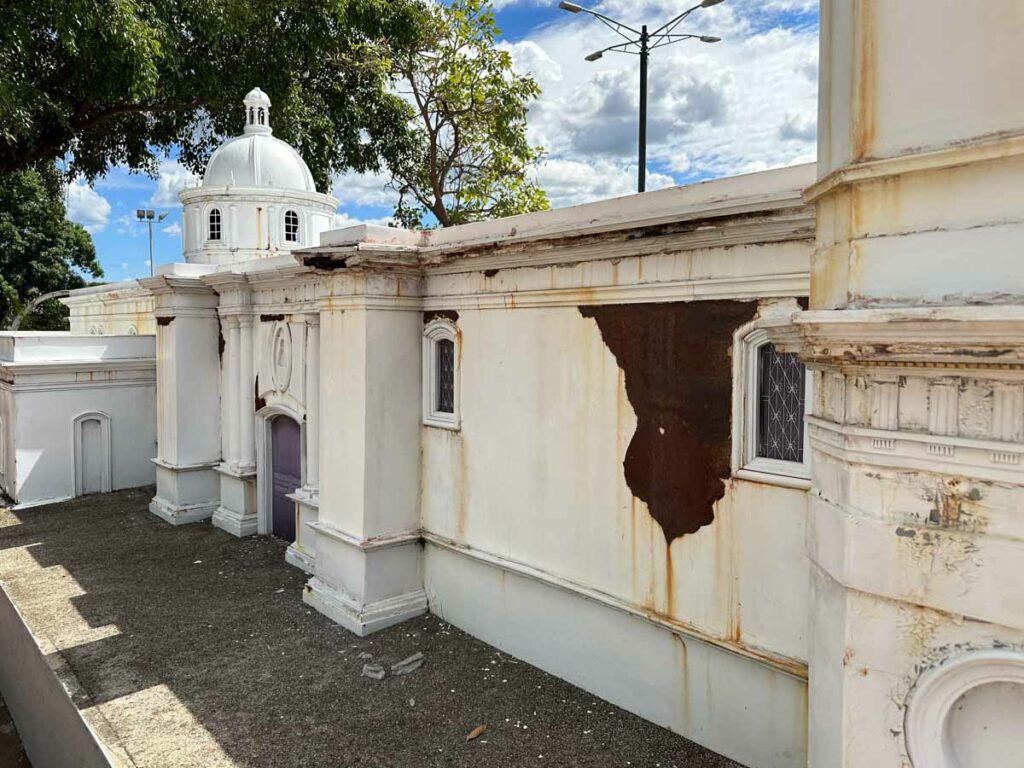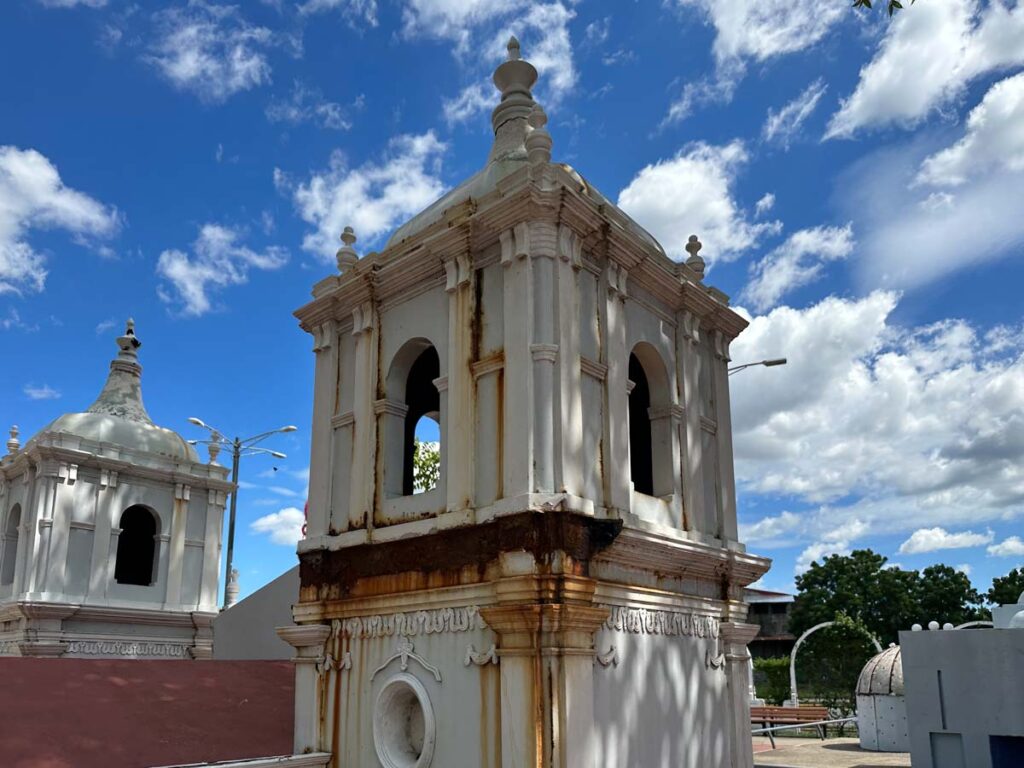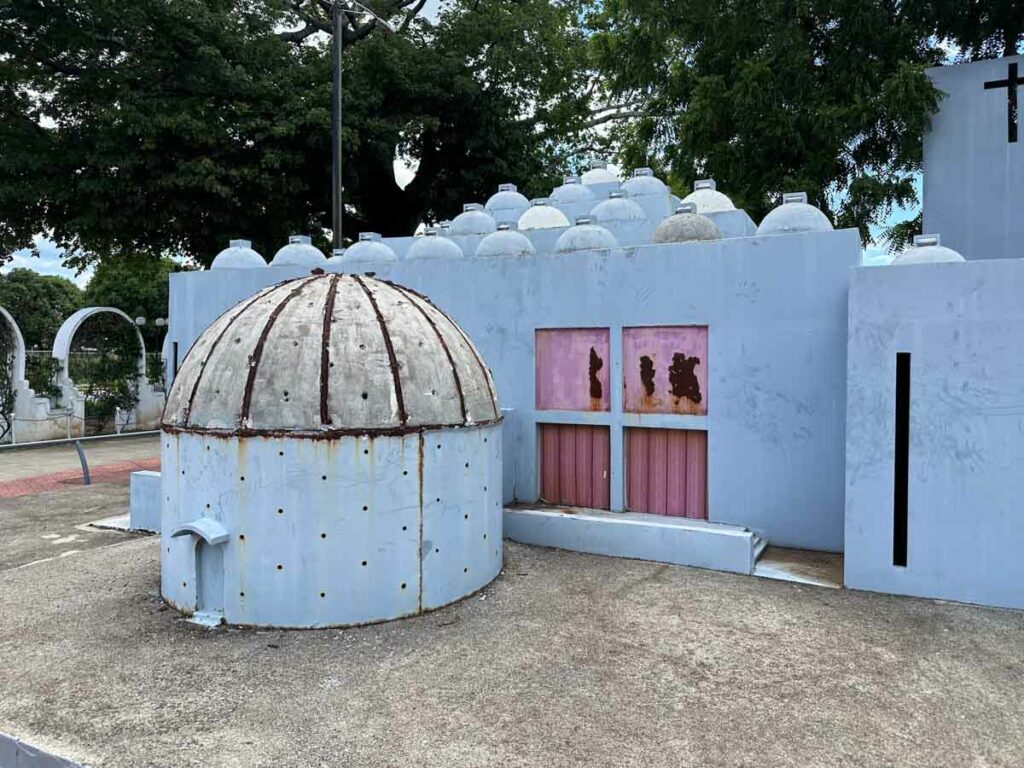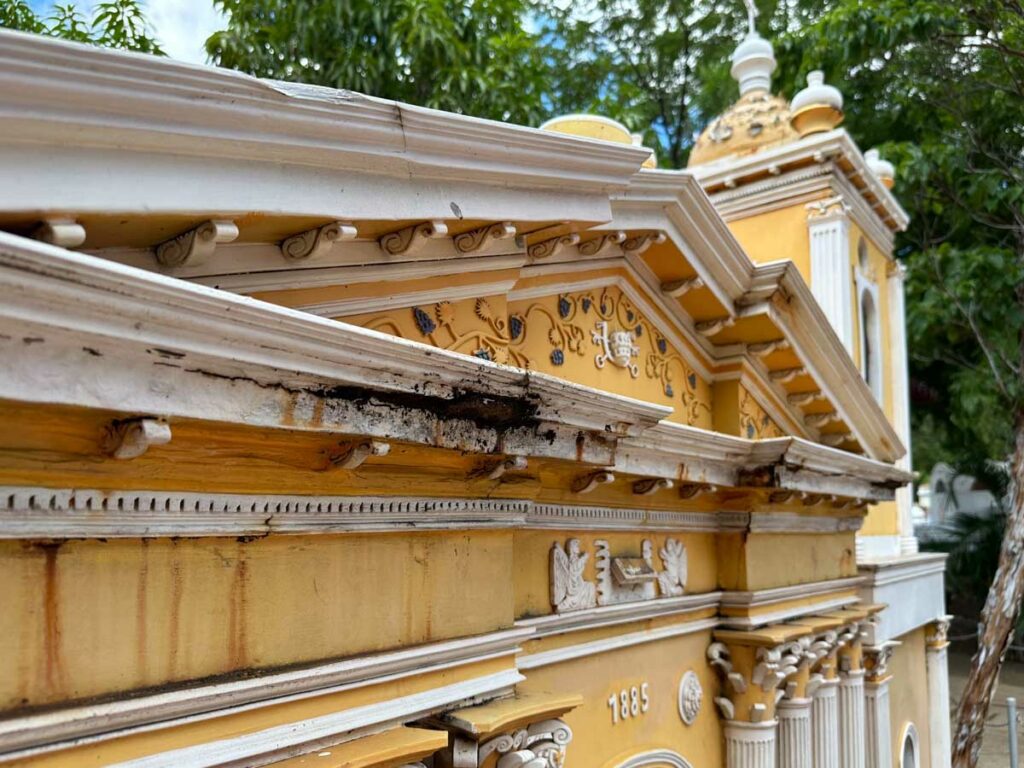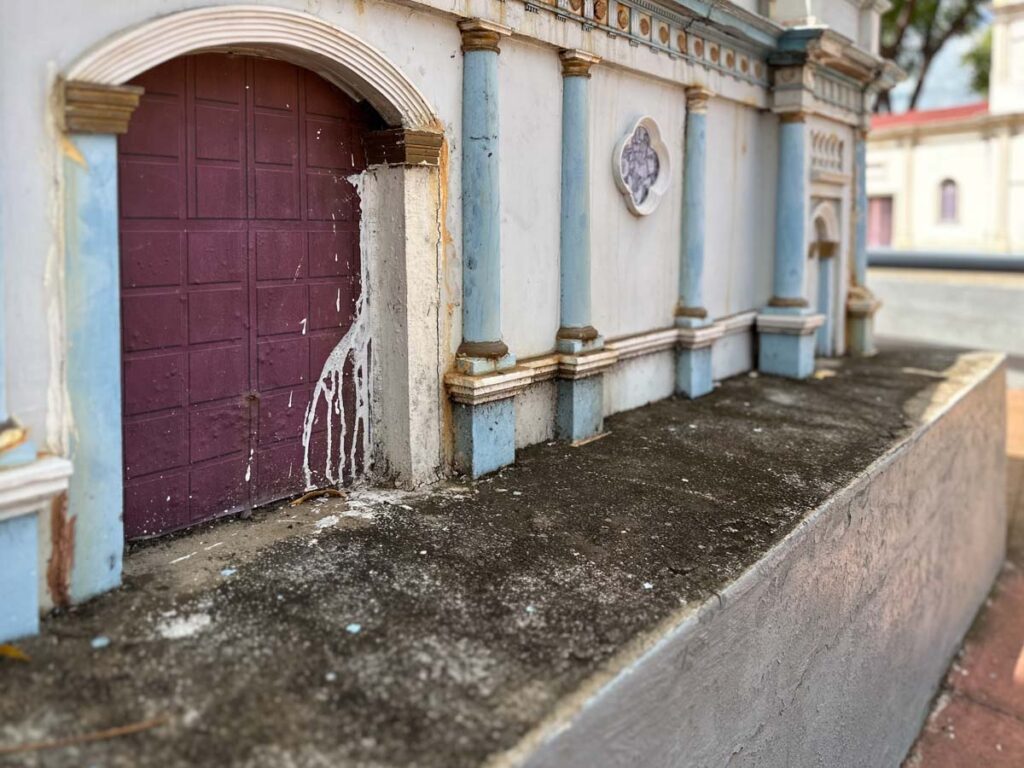Rain and sun have penetrated the walls of the fifty replicas of Nicaragua’s most representative churches. The rust on the iron columns and the cracks on the edges of their roofs are evidence of the abandonment of a millionaire work that, at the end of 2016, was promoted by the City Hall of Managua as one of the great attractions of the fourth stage of Paseo Xolotlán. The cost of the theme park was never disclosed by the capital’s municipality, despite being financed with taxpayers’ funds. The attraction stopped ” being important” to the city authorities as of 2021, after having spent 4,210,302 córdobas during four years for its maintenance.
“The project was quite shady, there were delays and millions of córdobas were spent that were not accounted for. It was considered ‘a masterpiece’ and that is why there was interest in keeping it intact. But then they abandoned it,” said a source linked to the Managua City Hall who was consulted by DIVERGENTES for this article. Since its inauguration, at the end of 2016, until 2020, the year of the Covid-19 pandemic, the City Hall of Managua was meticulous in the care and maintenance of the replicas in order to continue promoting visits to this theme park, which was one of the busiest in Paseo Xolotlán.
Paseo Xolotán is one of the signature projects of the regime co-directed by Rosario Murillo. It brings together attractions, museums and a recreational area with restaurants on the shore of the capital’s lake. The replicas of Nicaragua’s churches are a continuation of others built in 2014: those that evoke Old Managua, the city that mixed Art Deco, postmodern and neoclassical styles until 1972, when it was devastated by a 6.2 earthquake on the Richter scale. A city with a charm that has reached a mythical status among new generations that live in Managua. In contrast to the church models, those of the old capital are being “maintained”, but are kept closed to the public. A wire and yellow tape warn that the attraction is closed for the time being.
“The park was one of the few attractions that naturally received visitors; meaning that the municipality never hired buses to transport people from neighborhoods. Nor did it organize fairs to attract attention. The population was incredibly attracted to the models,” insisted the source.
However, in 2023, the replicas are deteriorated. DIVERGENTES visited the site during June and was able to confirm the lack of visitors to the theme park. We also noticed that the models have accumulated garbage and the signs that contain historical notes about the churches are damaged, almost illegible. Even the sign that states the prohibitions inside the park is not readable.
“The expense made by the City Hall in this project and the state of it shows that there is no planning and continuity in the works they execute. Money is spent regardless of whether it is wasted or not. The municipality moves at the pace of the officials’ interests,” said another source specialized in municipal public spending consulted by DIVERGENTES, who questioned the awarding of contracts for the maintenance of the theme park.
Justified hiring or business?
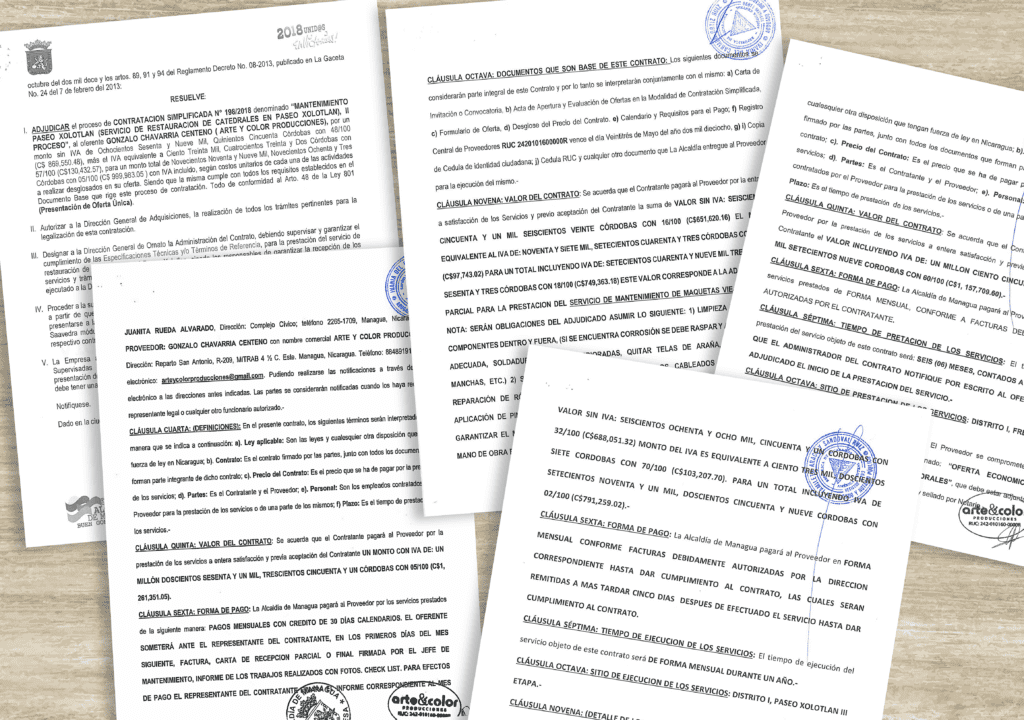
A review of documents carried out by this media revealed that all maintenance was paid to the company Arte y Color Producciones, owned by architect Gonzalo Chavarría Centeno, the same who built the Old Managua theme park.
The company received the sum of 749, 363 córdobas in 2017 and in 2018 it was paid another 999, 983 córdobas. That same year the municipality also hired it to restore the replicas of Old Managua for a cost of 791, 259 cordobas.
The two highest contracts were paid by the capital municipality in 2019 and 2020: for 1,157,709 and 1,261,351 cordobas respectively. In total, all maintenance contracts total 4,210,302 cordobas in a period of four years.
The source pointed out that Simplified Contracting is a method contemplated in the Municipal Administrative Contracting Law (801) only, as long as it is used in cases of emergency, calamity and other duly justified causes.
“Granting a project under this type of contracting is also possible if there is a single supplier in the market and the good or service cannot be substituted by another, without loss of quality, price, guarantees or any other relevant circumstance. In the case of the businessman Chavarría Centeno, the maintenance project could be awarded because only he knows how to maintain the churches. Not necessarily because he is close to Moreno or any other official”, explained the source.
However, the source linked to the Managua City Hall explained that the allocation of the model maintenance may have been biased by a specific precedent that can be verified in the 2018 Annual Investment Plan (PIA) of the Managua City Council: it is the inclusion of the Old Managua theme park maintenance, also built by Chavarría Centeno, but whose improvement works were assigned to the Ornamental Department of the municipality.
A note published by La Prensa points out that on December 27, 2017 the project file was included in the Annual Investment Plan (PIA) and approved by the Managua Municipal Council. “The allocated budget is one million cordobas and it is for the application of paint to the models, which total about 75 pieces including buildings, houses, offices and green areas of the famous Roosevelt Avenue, which was the capital’s ‘face’ at that time. The Municipality’s Department of Ornamentation will be in charge of giving color to the pieces”, details the publication.
The source linked to the City Hall of Managua indicated that the Department of Ornamentation is qualified to carry out the improvements in the models, therefore the expenditure of the budget in the contracting of a company -which also built the replicas- could have been avoided.
“The investment in the models has not yet been lost because they can be repaired, but the money that is gone is that of the maintenance. It is wasted money due to lack of planning”, questioned the same source.
A project like few others: well received
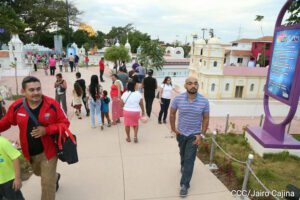
The construction of the churches theme park was the continuation of another project executed and inaugurated by the City Hall of Managua on July 17, 2014: the 75 models of the buildings of Old Managua for exhibition in Paseo Xolotlán.
Both projects were developed by the same company Arte y Color Producciones, owned by architect Gonzalo Chavarría Centeno. “No one in City Hall believed that the models of Old Managua would generate so much curiosity among citizens. I remember that most of the visits were organic and that was well received in the Presidency”, insisted the source. For several months Managuans came to that stage of Paseo Xolotlán to have their pictures taken next to the models of the old National Assembly or Central Bank buildings. The boom was so great that, in August of that same year, Rosario Murillo confirmed that the project for the construction of the churches’ replicas would be executed in 2015.
“We are going to slowly move forward in this new project, replicas of churches that are cultural heritage, national heritage of Nicaragua. It is the right to identity, the right to collect our legacy, the right to learn from ourselves, the right not to forget that we are blessed people, people of faith, of family, of community, people of identity and culture, people who see themselves struggling, battling with so many features that are truly inspiring,” Murillo said.
Murillo’s confirmation caused those in charge of executing work in the capital to include the construction of the new theme park as an emergency, but without taking into account the timeframe for construction. According to the source linked to City Hall, the “desire to comply and look good” with ‘Co-President’ Murillo, generated delays of up to two years and considerable losses to the municipality.
“A part of the temples were to be in place by March and the rest by the end of June. One of the most important components of the expansion of the Paseo is the representation of architectural monuments that exist in Nicaragua, and the main example of our colonial architecture are our temples,” said the general secretary of the Managua City Hall, Fidel Moreno, in January 2015, five months after Murillo’s order.
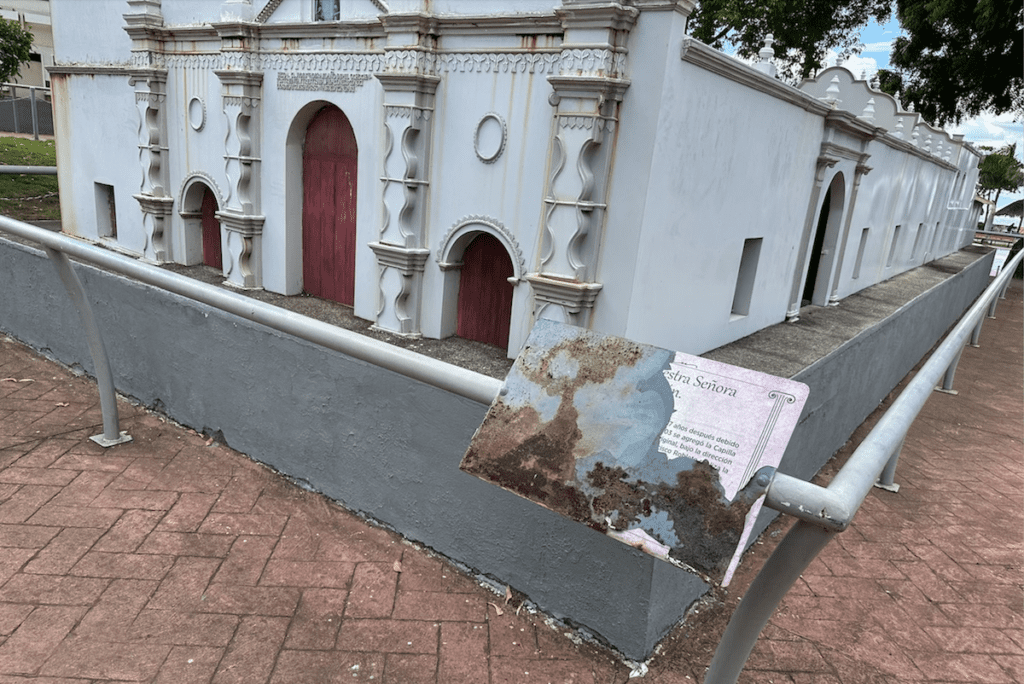
However, the deadlines that Moreno gave to the media that year were not met due to continuous delays in construction. That year, progress was made only in the construction of 18 replicas and soil movements in the Paseo Xolotlán stage.
“It is the same formula: there is no planning, they do not take time into account and sell projects that sometimes come to life, but leave mistakes, and others are still in a waiting queue, such as the expansion of the Juan Pablo II Highway”, said the source.
It was eleven months later, on December 15, 2015, that the first two replicas were installed: that of the Cathedral of Estelí and Matagalpa. “Then the larger ones will follow”, said Moreno, who detailed that the fourth stage of Paseo Xolotlán would have a length of 300 meters and its main attractions would be the replicas of the churches and a park with a water mirror of 13 centimeters at one end and 30 centimeters at the other.
However, eight years later, the Murillo regime’s dream of replicating Old Managua and Nicaragua’s most significant churches is rusting and peeling away in front of the calm waves of Lake Xolotlán, as a metaphor of the inescapable destiny of what was done in times of opacity and despotism. Nobody visits the replicas anymore, but they do visit Paseo Xolotlán. There are two main reasons for this: in the same perimeter of the replica park there is a Civil Registry office and a water park that serves to quench the heat of Managua.



